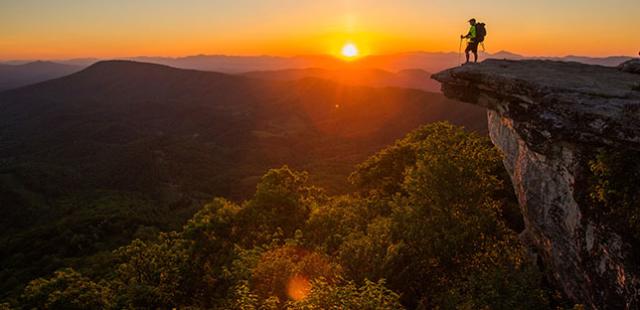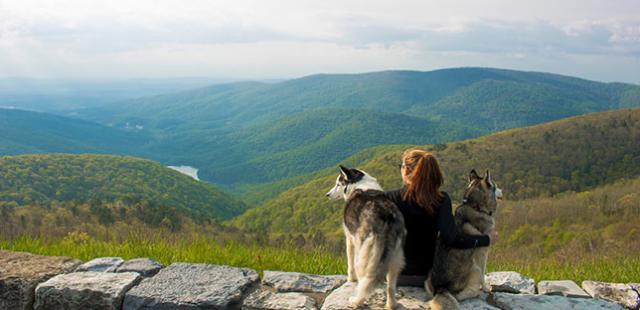While there are countless music genres in existence today, nearly all of these musical genres owe at least some credit to the musical heritage of the Appalachian Mountains of Southwest Virginia, referred to as “Appalachian Music”.
Many people may only think of Bluegrass when they think of Appalachian Music, but did you know the genre is the culmination of nearly 300 years of musical influences from around the world and has contributed to nearly every modern musical genre?
International Migrations & Their Influence on Musical Traditions
The Appalachian Music genre first arose after people from various European and African countries intersected in the mountains of Virginia, bringing their own traditions and cultures together to form a new and enormously influential musical style.
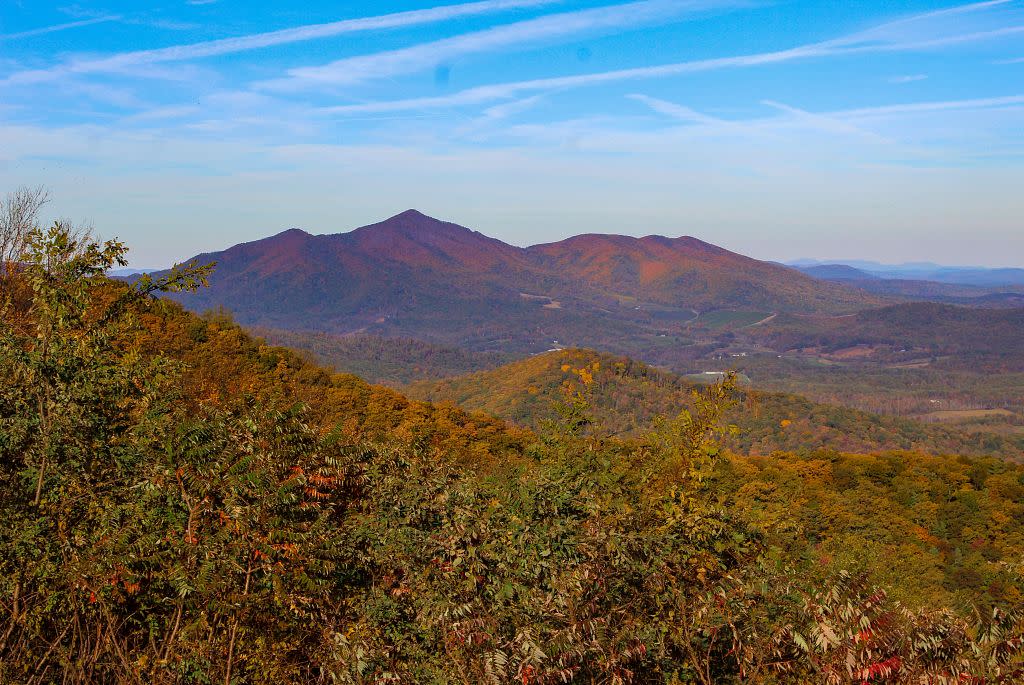
photo credit: shannon terry
During the 18th century, several international migrations were responsible for the birth of Appalachian Music. In Ireland, a population explosion changed a citizen’s prospects in their home country, which went from having four million citizens in 1780 to a total of more than seven million just forty years later. Many would leave Ireland in hopes of finding jobs in the expansive new country across the ocean, and most would take on positions as indentured servants to pay their way.
Another wave of immigrants would come to America from England after the French and English signed the Treaty of Paris of 1763, in which France relinquished their control over lands in America to England. England found itself in control of large swaths of land, which was then sold off to British citizens looking to live in a place that would give them more property for less money.
Immigrants also arrived in American from Germany following the implementation of laws that restricted religious freedoms and economic factors like land becoming more expensive in Central Europe. In America, land was abundant, therefore much more affordable for lower and middle class immigrants.
A final major migration was the forced migration of Africans across the Atlantic Ocean into slavery. These people would bring nothing with them on their cruel journey to the New World except for their traditions and beliefs, so of course these would be cherished and passed down to their children and grandchildren in generations to come, allowing them to keep their ancestry alive.
While America would see an increase in immigrants from many other parts of the world that would feed into the musical evolution of Appalachia music, these four cultural groups were the biggest contributors to the genre, blending their musical traditions with the indigenous peoples that had lived in the mountains for generations prior to create a sound that would endure for hundreds of years.
The Rise of Traditional Appalachian Music
When musical historians talk about “Appalachian Music”, they break down the genre into two defined periods. The first era would lead to the overwhelming popularity of the second period. The traditional Appalachian period occurred between the 1700s and the early 1900s, while the second, the Old-Time Appalachian Music era, took place from about 1900-1930.
The traditional Appalachian Music style fused the heritage of America’s immigrant populations with the indigenous groups living in Southwest Virginia, bringing together unique musical elements that had been passed down from generation to generation. For the Europeans coming to America, these elements included ballad-style songs that detailed the struggles of daily life as well as instrumental dance tunes.
The nasal quality that was typical of traditional Appalachian Music was a Celtic contribution, and while these new citizens were adjusting to a starkly different life in America, they kept their folklore alive by singing ballads of lords and ladies, castles, and ghosts, with the central themes of the stories being love and loss.
When it came to instrumental contributions, the Anglo-Celtic peoples are credited for bringing the fiddle to American music. Pianos were too costly for most immigrants, so fiddles would be one of the few instruments that they could afford, and the tonal styles of the fiddle perfectly mirrored the qualities of their ballad-style songs. A Scottish fiddle player by the name of Neil Gow is credited with introducing the rhythmic and powerful short bow sawstroke technique that became synonymous with Appalachian Mountain fiddle playing. German immigrants added to the development of Traditional Appalachian Music with instruments like the harmonica, Appalachian dulcimer, and autoharp.

While the European style of singing was typically solo or duet, Africans that were enslaved in the colonies brought a distinct tradition of singing songs about work and worship as a group. These songs were usually in a call-and-response format, with one person singing a line and the rest singing the response. The lyrics in African songs were constantly changed and updated to inspire hope and raise the spirits of the enslaved as the widespread practice of slavery began to take a strong hold in America.
The banjo was another major contribution that Africans made to Appalachian Music. The instrument originally hailed from Arabia and was brought to Western Africa as the Islamic faith spread. When Africans came to America, they began to make their own banjos from hollowed-out gourds or pots that were covered in animal hides. Banjos were considered "slave instruments" at the time and were not frequently used or heard outside of their homes, but beginning in the 1840s, the banjo’s singular rhythm and beat began popping up in Traditional Appalachian Music, producing an entirely new sound when combined with the fiddle.
The Hardships of Frontier Life

photo credit: beth-anne driskill
As European immigrants arrived in America, they found that much of the settled parts of the colonies were too expensive, especially as recently released indentured servants. Rather than living in abject poverty in the urban centers, many chose instead to purchase land in the untamed Appalachian Mountains, where they could make their living in a hard but proud manner.
These early mountain men and women were perceived by the settled regions in the East as being poor and lower class, and they attained the nickname of “hillbillies” due to this association. However, the truth is that to survive in the wild mountains of Southwest Virginia, you had to be healthy, strong, and knowledgeable about all manner of things, from farming to building and even general practices of medicine.
Living on the American frontier was a struggle, and these “hillbillies” learned soon after taking up residence that relying on other mountain residents was necessary for their survival. Close-knit communities began to pop up in the mountains of Southwest Virginia, where religion and social gatherings were extremely important. Musical traditions ran deep in both of these aspects of the communities and as decades passed, these neighbors began to meld their cultures into the sound that is now considered Traditional Appalachian Music.
With emancipation, many Black Americans wished to leave their former slave residences and find their own homes, but they were met with the same problem as the European immigrant populations had faced: settled farmland was too expensive. Some of these newly freed peoples would also find an identical solution, moving to the Appalachian Mountains in search of a new life and taking the traditions of their music with them.
In addition to instrumental and lyrical elements, the cultural elements that emerged from the Appalachias were also distinct attributes of the music. Religion was a core component of life in the remote mountain towns, but so was community. The Appalachian folk worked extremely hard to eke out a living during the days through farming, coal mining, and other backbreaking careers, so on weekend nights, they would gather together and let loose with barn-raising events and musical performances by other locals.
Dialects were another element that went into the creation of Appalachian Music; these remote communities often did not have much contact with the outside world, or even other communities outside of a small radius, as the natural, unrefined landscape made crossing over mountains a near-impossible task. When record labels began traveling to these untouched communities in Southwest Virginia, they would frequently find that they couldn’t understand the performers, leading to occasionally incorrect song titles for the earliest recordings done in the region.
These unique musical and cultural elements all came together in the Appalachian Mountains, with the communities having strong religious centers, lyrical themes of survival, love, and heartbreak, and the rhythms of the banjo, fiddle, and other European instruments complementing each other, resulting in a musical genre that would come to captivate America.
Traditions Evolve: The Birth of Old-Time Appalachian Music
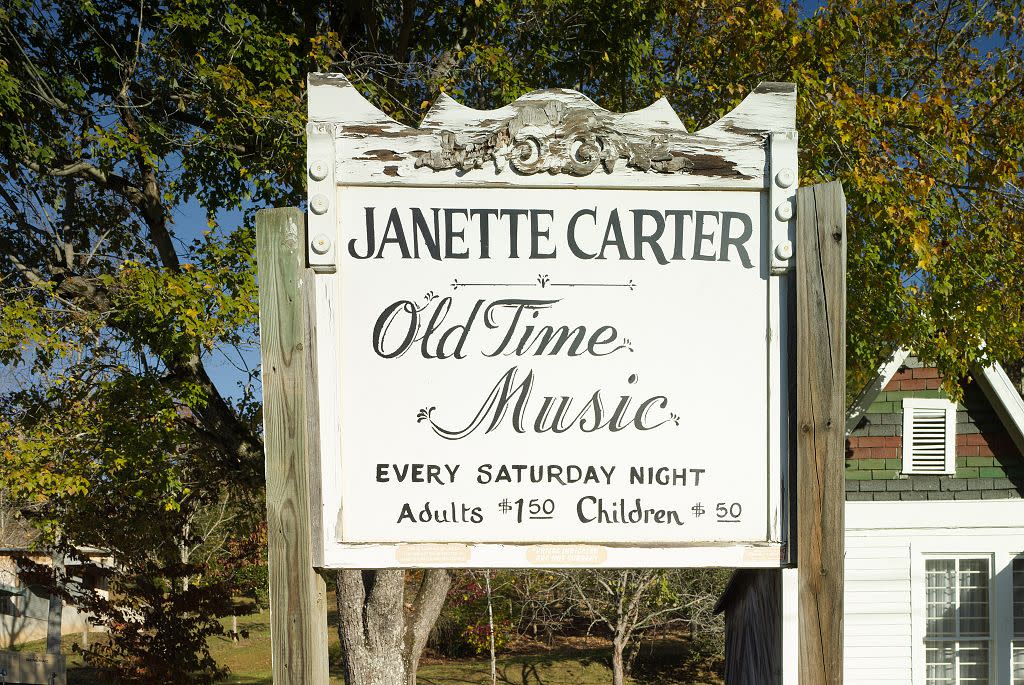
photo credit: cameron davidson
After almost 250 years of musical traditions meshing together in the Appalachian region, a distinct sound began to emerge that was referred to as Old-Time music. Researchers and historians worked in the late 19th century to collect traditional musical forms, recognizing the importance of cataloging this music to preserve the cultures that were fading as a national American culture emerged.
Technological innovations were exploding, allowing for the music scene to grow like never before; automobiles gave people the ability to travel long distances and to more remote places than they had previously been, mail-order and mass-produced instruments provided the means for less affluent musicians to expand their talents, and the invention of recorded sound meant that songs performed in the most remote areas could be preserved and replayed hundreds of miles away.
Music that had been played only on front porches and in the barns of Appalachian America could now be recorded and broadcast on radio stations, giving the rest of the country a taste of the unmistakable genre that was to be called Old-Time Appalachian.
These recordings were happening throughout America, but some of the most important and lasting performances were recorded in the mountains of Southwest Virginia. In the summer of 1927, a series of recordings were undertaken by Victor Records that came to be known as the Bristol Sessions.
Recorded in the small city that straddles the Virginia/Tennessee state line, this music brought performers from all over the surrounding mountain landscapes together in one place to immortalize their songs using brand-new technologies. Huge music stars like Jimmie Rodgers and local Virginia legends the Carter Family were recorded for the first time during these sessions, launching their careers as international country music stars and leading the city to be nicknamed “The Birthplace of Country Music”.
It’s important to note that while these iconic recordings were meant to capture the sounds of Appalachian Music, there was only one Black artist, El Watson, to be recorded during the Bristol Sessions. During this era, America was experiencing the ugly transition into lawful and formalized segregation, and most of the noteworthy contributions of Black musicians in America were being wiped out or credited to the White artists in the area.
The first-ever recordings of Appalachian Music may have been a pivotal component to the genre’s growth, but another aspect of the music industry that was important was the emergence of large-scale music festivals.
One such festival in Virginia was the White Top Folk Festival, which ran from 1931-1939. Held in the mountains of Grayson County near Abingdon, this annual festival showcased the music and traditions of the surrounding regions, but like the Bristol Sessions, the festival did not include Black performers or allow Black attendees, severely limiting the authenticity and true heritage of Appalachian Music experienced at the festival.
The first White Top Folk Festival in 1931 drew thousands of people, and it would continue to grow over the years into a major music event. In 1933, First Lady Eleanor Roosevelt even attended the festival. Her father, Elliot Roosevelt, had moved to Abingdon by himself to seek treatment for a drinking problem when Eleanor was a child, and he would often write her letters that described the area.
As an adult and after her father had passed away, Eleanor Roosevelt wished to see the place where her father had lived, and the White Top Folk Festival gave her the chance to experience the epitome of Appalachian culture. By 1935, the festival had peaked, drawing over 10,000 visitors, but subsequent years would draw smaller crowds, and after several years of canceling the festival due to weather or local problems, the White Top Folk Festival was finally shuttered in 1939.
Appalachian Music Today

Photo Credit: Brian Camp, @brian_k_camp
The popularity of Appalachian Music waned during and after the Great Depression, but rather than completely dying off, the genre began to transform and influence the latest musical stylings created in the latter half of the 20th century. Country, Bluegrass, Rock n’ Roll, Folk, and Americana all contain notable aspects of Appalachian Music, pulling from the religious, thematic, and instrumental qualities associated with the genre.
But in addition to continuously inspiring other musical genres, Appalachian Music is currently making a comeback, especially in the mountains of Southwest Virginia. Here, you can follow The Crooked Road, a route that ties together the most important musical heritage destinations of the area, including the Birthplace of Country Music Museum, where you’ll learn all about the important 1927 recording sessions.
You will also see the Carter Family Fold, the home of the famed Carter Family that has been converted into a performance theater and museum, as well as The Floyd Country Store, an authentic country store that is over 100 years old and one of the few places you can experience Appalachian Music firsthand during the weekly Friday Night Jamborees.
More stops include the Southwest Virginia Cultural Center & Marketplace, where you can peruse goods made by local artisans and often catch live music performances, and the Blue Ridge Institute & Museum, which is the largest folklife museum in Virginia and highlights the historic traditions of music, customs, and crafts that impacted everyday life in the Appalachian Mountains. This route provides an in-depth look at the Appalachian Music genre, and every real music lover should make the trek along the Crooked Road at least once.
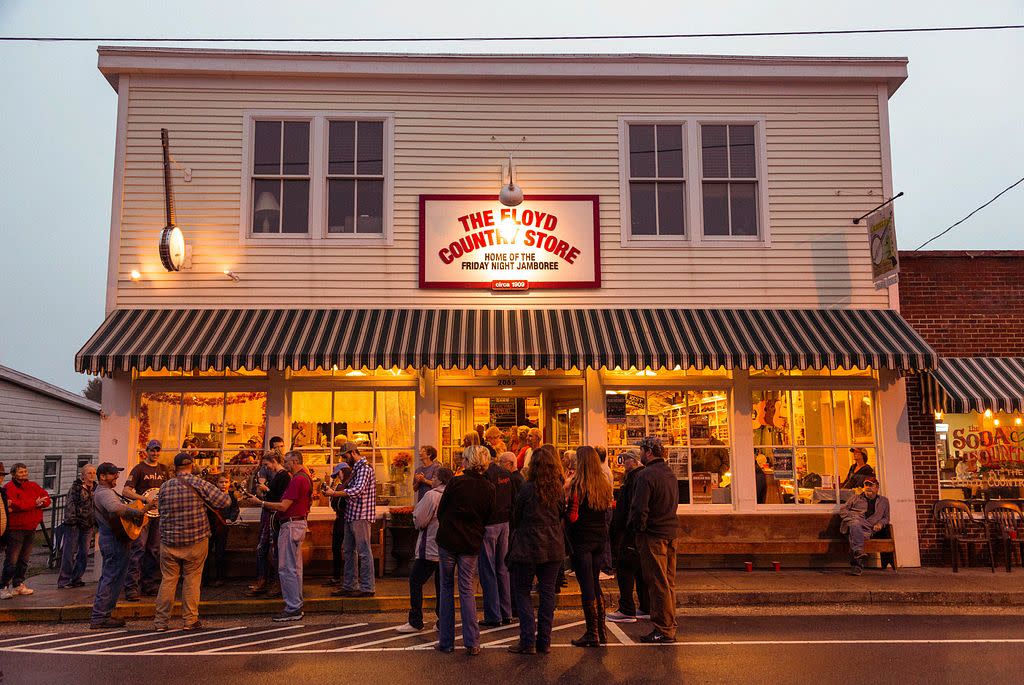
Photo Credit: Brian Camp, @brian_k_camp
Appalachian Music originated in the mountains of Southwest Virginia, and today, the region still creates some of the most skilled performers, historians, and craftsmen at the Wayne C. Henderson School of Appalachian Arts. This program focuses on teaching students about the rich musical heritage of the region, as well as the meticulous skills needed to become a Luthier (someone who builds string instruments like guitars).
The school was named for native Virginia, Master Luthier, and Appalachian Music expert Wayne C. Henderson, who has made guitars for internationally renowned artists like Mumford & Sons and Eric Clapton. While a guitar from Wayne C. Henderson requires you to join a years-long waitlist and will set you back thousands of dollars, several other talented Luthiers in Southwest Virginia craft gorgeous handmade guitars as well as a variety of other string instruments.
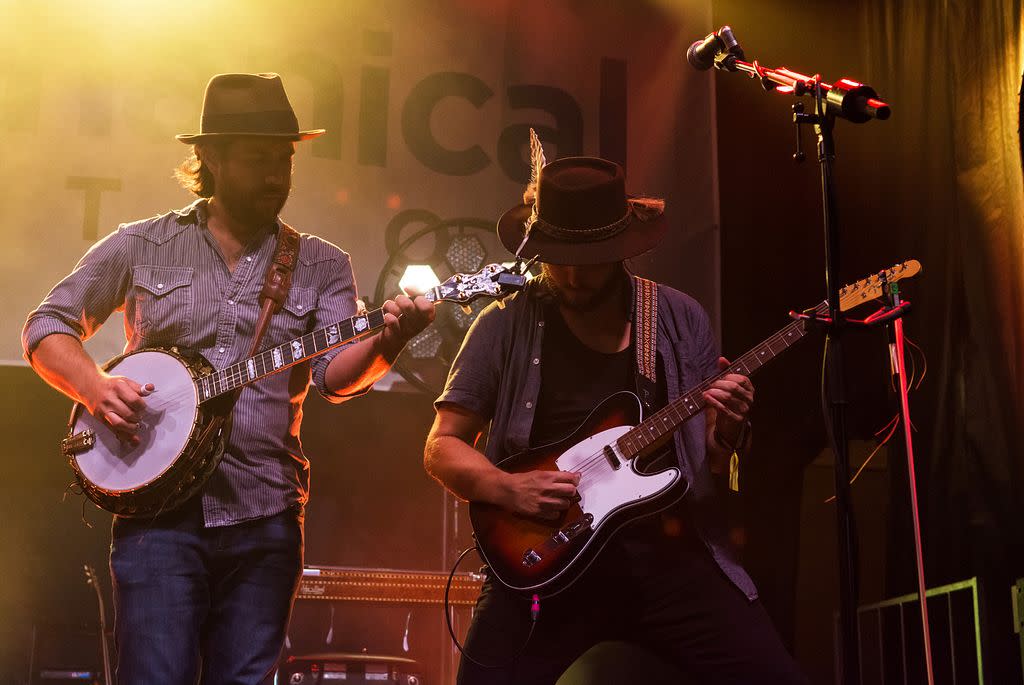
Photo Credit: Joshua Moore, @jtm71
Music festivals have also begun to instill more Appalachian Music into their annual lineups. Large Virginia festivals like Bristol Rhythm & Roots, FloydFest, the Richmond Folk Festival, Red Wing Roots, and Rooster Walk have incorporated Appalachian traditions into their events in everything from the vendors and foods to the artists performing, while festivals like the Blue Ridge Folklife Festival, Old Fiddlers’ Convention, Mountains of Music Homecoming series, and the Virginia Highlands Festival are all centered around the heritage of Appalachian Music.
Want to know more about Virginia’s lesser-known history? Dig into these articles and stay tuned for more But Did You Know… history pieces to learn about some of Virginia’s most incredible true but untold stories!
